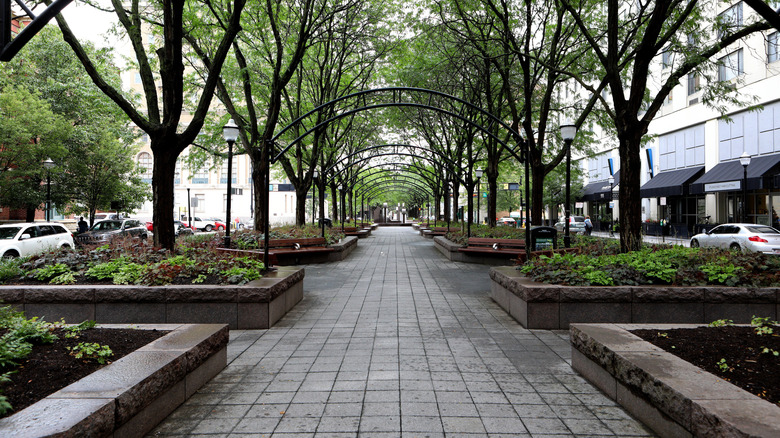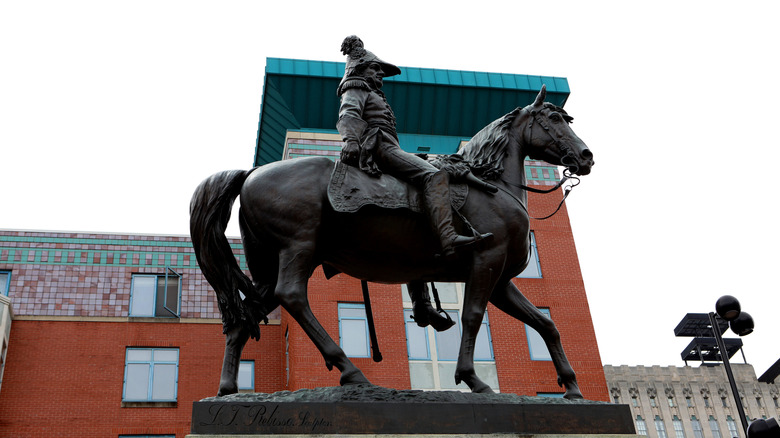Cincinnati's Oldest Park Is A Picture-Perfect Spot For Serene Strolls, Picnics And Public Art
Tiny but mighty, Piatt Park (pronounced "Pie-it") stretches along two blocks of downtown Cincinnati, offering a fresh-air respite amid the urban landscape. Along the central promenade, trees and flowerbeds accompany strollers, and benches and tables provide places to rest, grab a lunch with friends, or listen to serenades by buskers. The buskers follow more than 100 years of tradition, too, as the park was established in 1817, not long after Cincinnati's founding in 1788. The land itself was donated to the city by local bigwigs, the Piatt brothers, who originally intended it as a marketplace. However, that never quite materialized thanks to one of Ohio's oldest public markets, located nearby, and by the 1840s, it had become a de facto park — a status officially confirmed in 1868.
In the years since, Piatt Park has added a number of artistic accoutrements that add both shine and threads of Ohio history. Anchoring the two ends of the park are statues of former Ohio-born presidents James Garfield and William Henry Harrison — both of whom died in office. Garfield, who was assassinated in 1881 shortly after his inauguration, stands tall in bronze on the Vine Street side, grasping a stack of papers in his right hand and extending his left as if about to give a speech. Harrison, who died of pneumonia just 32 days after taking office, gets a grander treatment. Sitting erect atop a horse in bronze, Harrison primes for battle in full military regalia in tribute to his victories in the War of 1812 and the Battle of Tippecanoe.
Reflecting the neighborhood around Piatt Park
Cincinnati reaffirmed its love for Piatt Park in 1989, with the installation of two small, circular reflecting pools looking across the Race Street intersection. The granite slabs standing in each feature carved symbols representing water, air, and land. However, for locals, their meaning may be more associated with roast beef, pastrami, and potato pancakes. That's because the fountains were dedicated to delicatessen owner Isadore "Izzy" Kadetz, who combined a churlish demeanor with a heart of gold — including charging customers only what they could pay — and it won him local fame and a regional chain.
The location of Piatt Park in the heart of the city also puts it within easy walking distance of Cincinnati's top sights. Less than 10 minutes south by foot is the Contemporary Arts Center, a Cincinnati institution since 1939. Its rotating exhibits aim to inspire "thought, action, and creativity" in a wide variety of mediums and perspectives, according to the museum's website. Across the street, find the Aronoff Center for the Arts, presenting performances of dance, theater, music, films, and more. A short walk south of that is the National Underground Railroad Freedom Center, paying tribute to the city's role in helping to rescue slaves from bondage in the years before the Civil War and educating visitors about ongoing struggles for inclusive freedom. Downtown is also a great place to see why this Midwest city takes the crown for the most spectacular street art in America. Visitors can also escape Cincinnati to this nearby Kentucky town full of historic charm on the Ohio River.

